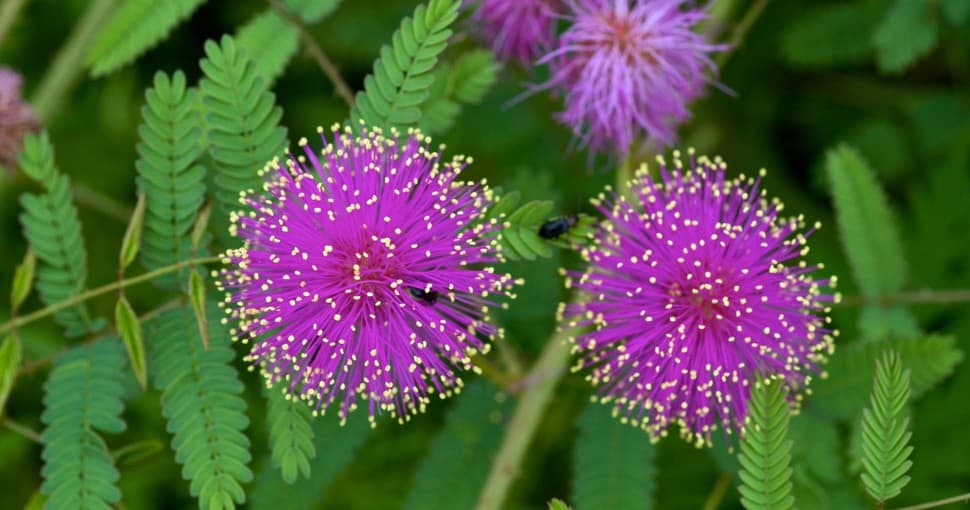Mimosa trees can be found the world over, and come in all manner of sizes and colors – but which one is right for your garden? The Mimosas on this list are among the most stunning in the world, and can add a dash of class to any yard.
Contents
The first thing to know about the trees on this list is that Mimosas can be quite diverse. Some are tall while others are short. Some make for good cattle feed or are useful for timber or medicinal purposes, and some are invasive nuisances.
However, one thing just about every mimosa tree variant on this list has in common is elegance. These are trees that often feature bipinnately compounded leaves and incredibly blooming flowers in all manner of colors.
Of course, just because these trees are beautiful doesn’t mean you should plant them. Again, while most of these trees are either native to the United States or can be acquired via imports, you need to be extremely careful not to introduce a variant that may be considered an invasive species where you live.
Nevertheless, all of these trees can add a unique flair to your garden. They offer a unique blend of prickly protective spines, fragrant floral blooms, and leaves that often react to being touched. In short, they’re an intriguing plant for the right kind of garden plot and curious gardener.
1. Mimosa aculeaticarpa
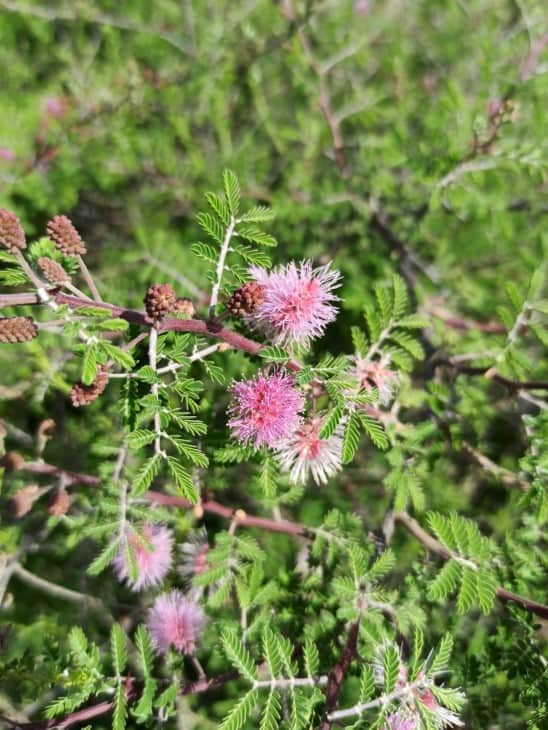
This Mimosa goes by many names (and that’ll be a trend on this list) with some of its most common nicknames being the “catclaw mimosa” and the “wait-a-minute bush.” It is native to the American Southwest and Upland Mexico.
This particular tree doesn’t grow too large, with it often topping out at just around a meter tall. That makes it a good choice for gardeners looking to plant it as a hedge or as a support for other plants. Unlike some other variants, the seed pods of these trees can also be used as cattle feed.
The leaves of this tree tend to be white or pink and are bunched together, blooming with spherical heads, while its twigs are hairy and armed with spines. In addition, the seed pods feature recurved prickles.
2. Mimosa diplotricha
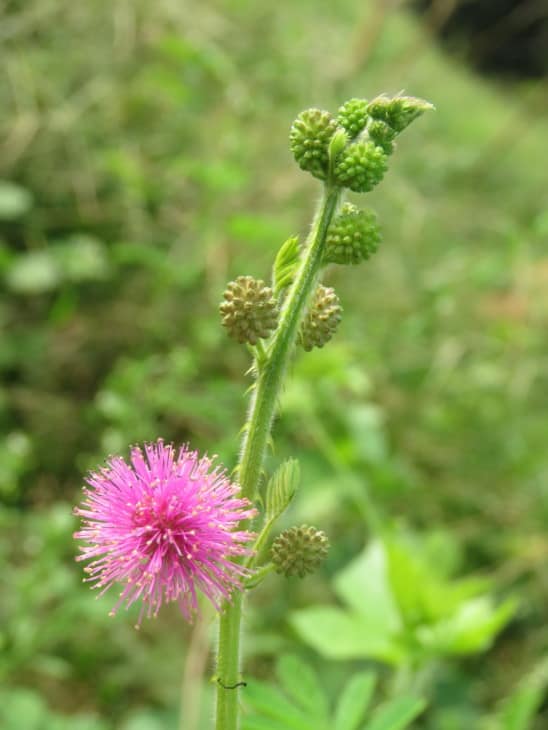
One of the biggest downsides to a species such as Mimosa is that they can grow so quickly in the right conditions that, when introduced into a new environment, they can become an invasive species. Such as the case with Mimosa diplotricha, which is native to South and Central America.
However, it has since been introduced to Java, Queensland, Fiji, and other regions, becoming an invasive species in nearly all of them. This is problematic in part because every part of Mimosa diplotricha is toxic to animals that might unknowingly graze on it.
In terms of its appearance, Mimosa diplotricha appears more feathery than many other Mimosa trees, with flowers that bloom into a pink puff ball, and can grow to a height of roughly three meters.
3. Mimosa microphylla
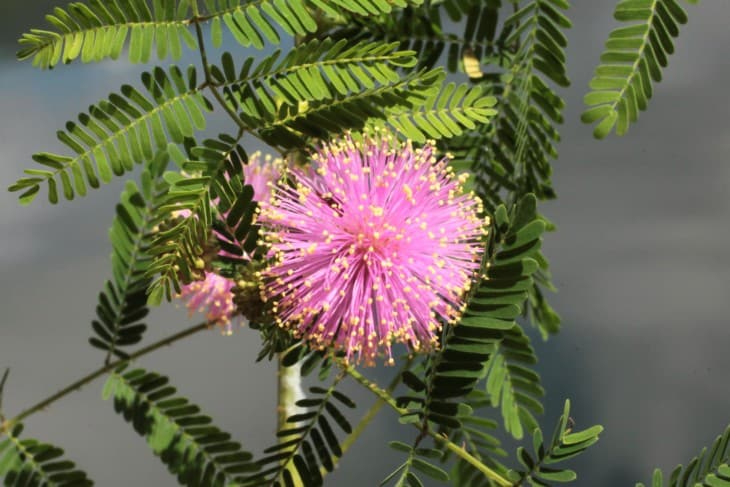
This elegant species of Mimosa is native to the Southeastern and Mid-Atlantic region of the United States. Like so many of the mimosa trees and shrubs on this list, it is a member of the legume family that features prickly stems and compound leaves.
In this case, the Mimosa microphylla has four to eight pairs of leaflets which, like others on this list, are sensitive stimuli, particularly touch. If you touch them, you can often see the flowers curling up, which may be a defense mechanism on their part.
You can find this species of Mimosa in a wide range of different areas, with some of the most common being forests and dryer woodland regions. That said, they can also sometimes be found in areas with more human development.
4. Mimosa nuttallii
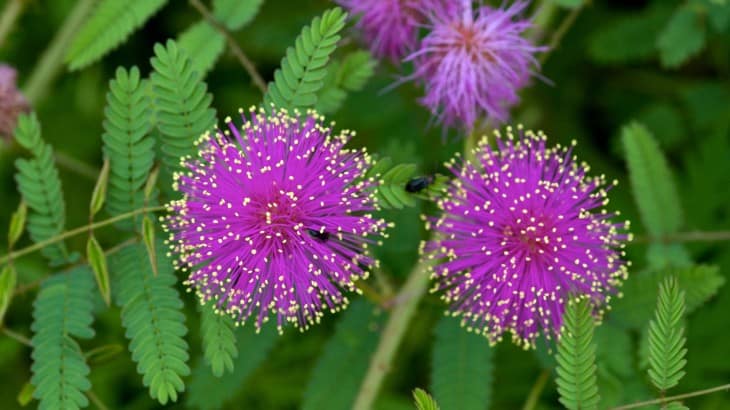
This is a perfect example of a mimosa tree that goes by many names, including sensitive-briar, catclaw brier, and sensitive brier – all names you’ll also hear applied to other mimosas. This is yet another reason why the naming conventions for these trees are, well, confusing.
Whatever you call them, these gorgeous trees are native to the center of the United States in states such as Oklahoma. They are herbaceous perennial legumes that feature ribbed stems and frond-like leaves, the latter of which fold up when touched.
These plants offer greenish bramble fruits and feature pinkish-purple stamens, and sometimes have yellowish tips. You can find them in all manner of locations, from roadsides to grasslands to silt-covered land and everywhere in between.
5. Mimosa ophthalmocentra
This mimosa tree is native to Brazil, and there is a long tradition of it being used there for a wide range of medical purposes. For example, it is sometimes used in extract form to treat coughs and bronchitis.
In addition, the wood from these trees make for good firewood, while the trucks grow to around 20 cm in diameter. For all of their usefulness, however, these trees are often best left alone to bloom.
That’s because these trees have a unique look to them, featuring narrow cylindrically-shaped spikes that stick out with white and yellow petals. The blossoms themselves can appear pink, while the fruit can be red, green, or purple.
6. Mimosa quadrivalvis
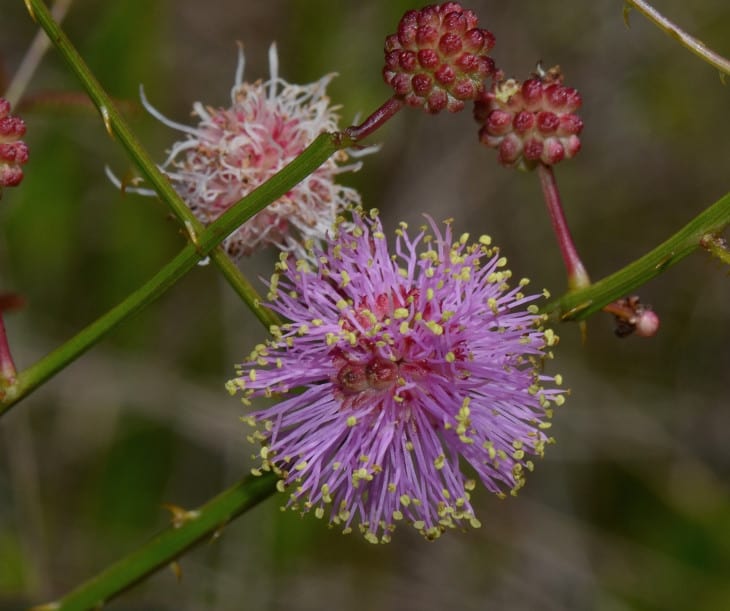
This is another example of a mimosa tree that goes by a variety of other names, including “sensitive briar” and “cat’s claw.” It is a trailing vine tree that is native to North and Central America as well as the Caribbean.
The name “sensitive briar” comes from the fact the leaves fold up when someone or something touches them. The leaves feature 16 pairs of leaflets. The flowerheads for the Mimosa quadrivalvis are pink clusters that feature prickly fruits, with flowering happening from May to September.
The habitat for this variant of mimosa trees is relatively various. You can find specimens everywhere from open woods and glades to thickets and prairies to right on the roadside.
7. Mimosa rubicaulis
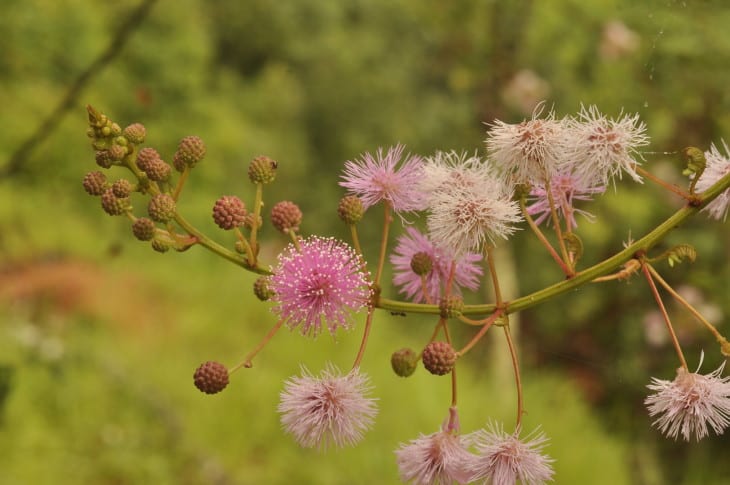
The leaves of this variety of Mimosa tree are bipinnately compounded, with the leaves identifiable by having eight to twelve pairs of pinnae, while other varieties such as Mimosa pudica have two pairs of leaflets that are prickly. The plant is found across the Indian subcontinent.
This variety of Mimosa tree is typically in bloom from June to September, boasting beautiful pink flowers that fade to white as the months drag on. This can create luscious speckling of pink and white in Mimosa pudica trees that is absolutely gorgeous.
It is native to Afghanistan, Bhutan, and the Himalayas. Due to its short stature, it is also used as hedges. The wood from this variety can be used for everything from wooden tent pegs to gunpowder mixes with charcoal. The roots and leaves of this tree are also used medicinally.
8. Mimosa scabrella
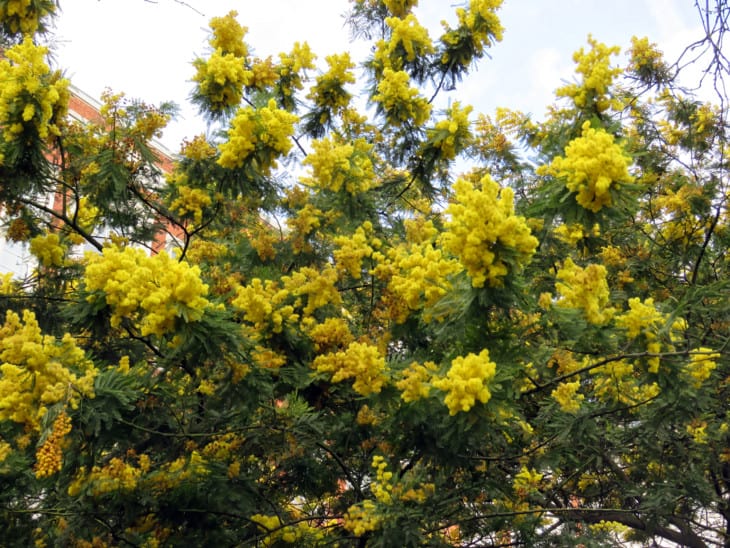
This specimen grows especially quickly – in fact, it’s one of the fastest growing trees in the world, capable of growing several meters in a single year. It is able to reach a height of 15 m in just around three years. Its trunk measures roughly 01. to .05 m in diameter.
The yellow-flowered tree is native to the southern portion of Brazil, and it is an excellent example of the stunning biodiversity on display there. It is also another reason why that region, like much of Brazil’s natural beauty, needs to be protected and preserved for future generations.
Thankfully, the fast growth of Mimosa scabrella can help with Brazil’s deforestation woes a bit. It is also used in agroforestry to shade coffee plants as well as beans and maize. It doesn’t require extra fertilization, either due to it being a legume plant and the natural decomposition of its leaves.
References: 1 | 2 | 3

